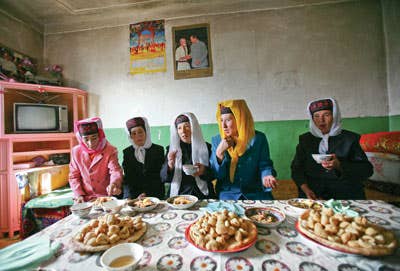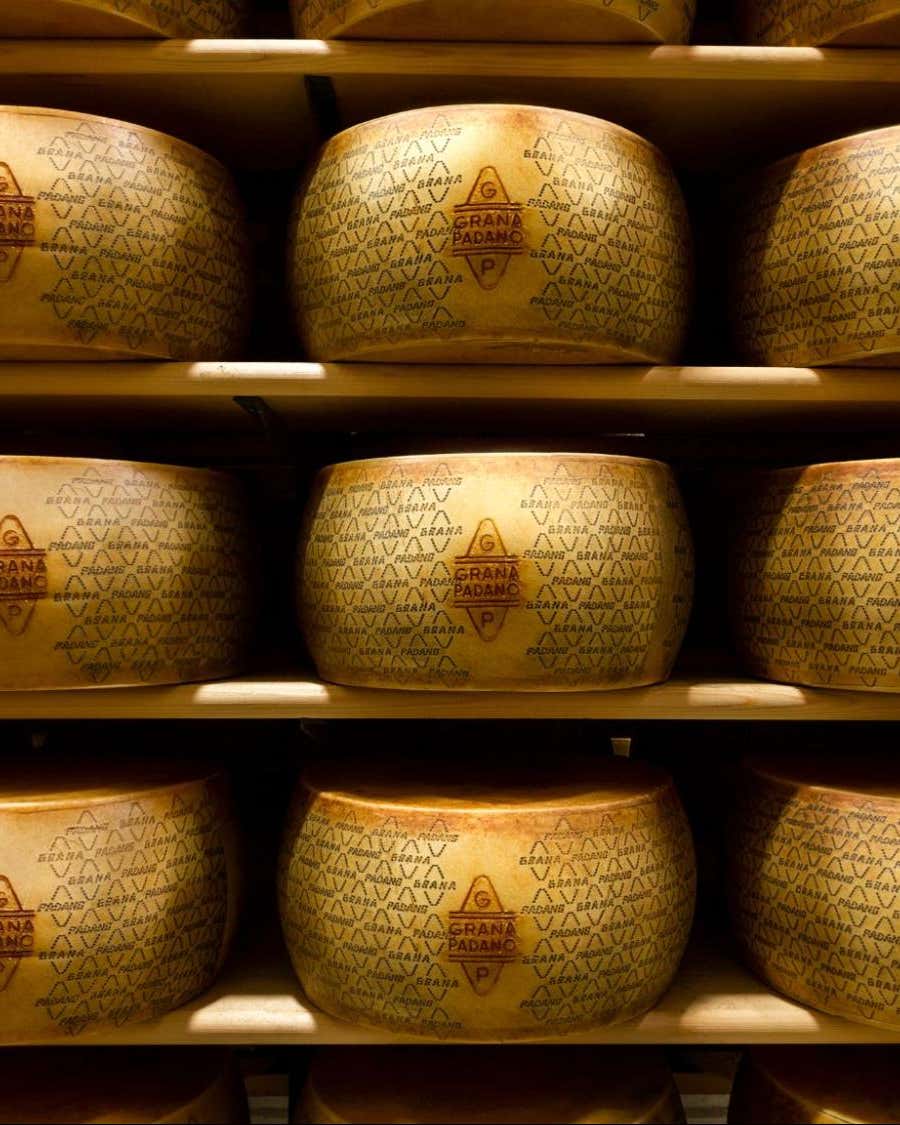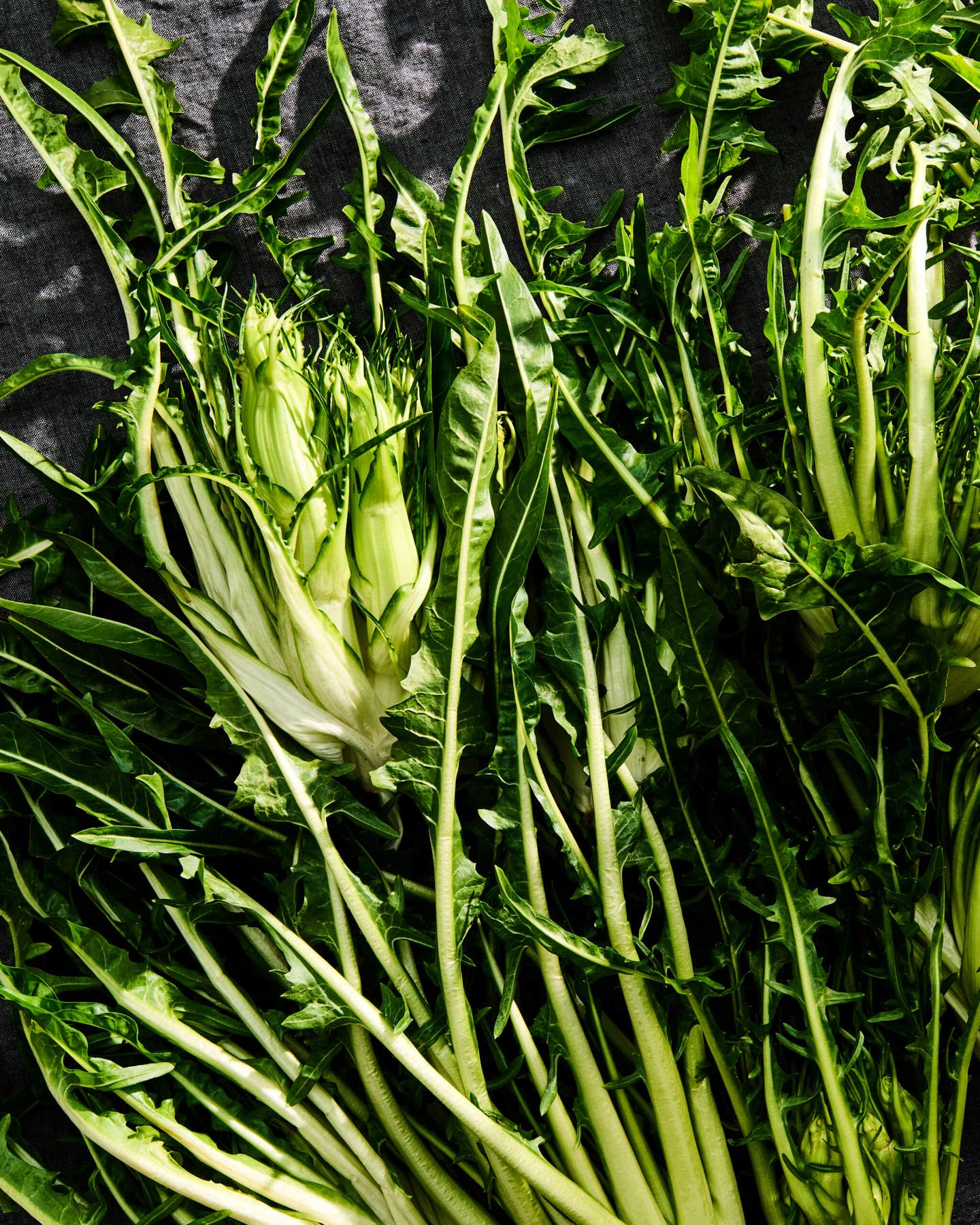
Lamb Around the World
I will always remember the shock I had as I walked down my parents' street in Beirut and almost stepped in a pool of blood. The civil war had just ended, and I couldn't understand why I would be stumbling across such a gruesome sight. Then I remembered. It was early morning, and our local butcher must have been slaughtering a lamb in his shop, a practice common to this day in Lebanon.
I walked inside the store and watched him as he laid the head and trotters on his block and carefully cleaned the innards in a bucket of water. He hung the precious liver on a hook and proceeded to cut the carcass in half along the spine before hanging it up, too. As customers entered the shop, asking for specific parts, he'd take the lamb down and cut it to order.
Such a scene is a fixture of daily life all over the Middle East and North Africa, where lamb is an essential, even revered, part of both everyday and celebratory cooking. It is rare to find anything but lamb at butcher shops in this part of the world; there isn't enough grazing land for cows, and goats are too destructive to keep in large, uncontrolled flocks. It was in the Middle East, historians believe, that sheep were first domesticated, some 11,000 years ago, not only for meat but also for milk and wool. To this day, on the slopes of Mount Lebanon, as in the Alps and elsewhere, shepherds follow ancient farming methods, herding their flocks down from the high grasslands onto the plains when cooler weather arrives.
I grew up eating fresh lamb every which way: cooked to tenderness in tomato-based yakhneh, or stews, that were flavored with cinnamon, allspice, and citrus zest; ground and stuffed into eggplants; minced with onions, spices, and bulgur for kibbeh; and more. We ate or used every part of the animal. The liver was a delicacy, served raw for breakfast, cut into cubes with fresh mint, and the meaty bones went into a large pot with hulled grains of whole wheat to make h'risseh, a comforting porridge.
It was only when I left Beirut for London in 1973 and began to travel extensively in the West that I realized that the rest of the world approached lamb quite differently. In Great Britain, the meat—most often a big cut, like a whole leg—tends to be cooked simply: roasted, say, and served with vinegar-spiked mint sauce and red currant jelly. At first, I found the notion of eating lamb with sweet-tart accompaniments rather odd, but I quickly came to savor the way the silky jelly and the sharp-sweet sauce cut into the rich meat and made it taste lighter. I learned that the French prefer more-straightforward combinations, as in their lamb and vegetable navarin stew or a rib rack roasted with herbs like rosemary and thyme.
By contrast, in the United States, I learned that except at restaurants, where I found wonderfully creative lamb salads and stews, the meat was a bit of an outcast, not nearly so popular as beef or pork. When I was testing recipes for one of my cookbooks while living in a borrowed apartment in New York City, I would walk to the supermarket a few blocks away and stand before the meat case, wondering where I was going to find the necks and bellies and boned shoulder shanks that I needed. Eventually, I learned that specialty markets and butcher shops carried larger selections, and at farmers' markets in New York City and elsewhere, I bought fresh lamb, both meaty cuts and offal, of impeccable quality that was as delicious as any I grew up with in Beirut.
Lamb is an inherently expressive food; more than the flesh of any other animal, its rosy meat speaks of the place in which the animal was raised. The Scots have their treasured lambs from the Shetland Islands, which graze on heather, and the French prize their agneaux de presale: sheep that roam the sea salt-kissed meadows of coastal Normandy and Brittany. The flavor of the meat carries hints of the ocean and the wild herbs that grow along its shores.
The distinctive characteristics of lamb probably have as much to do with nurture as with nature, though. _In The River Cottage Meat Book _(Hodder & Stoughton, 2004), the cookbook author Hugh Fearnley-Whittingstall explains that because sheep thrive easily on all kinds of terrain, they are more likely to be raised and fed outdoors, on natural pasture, instead of in feedlots. So it is in Great Britain, where Fearnley-Whittingstall lives, as well as in Australia and New Zealand, the two top lamb-exporting countries in the world. Even in the United States, where most lambs are fed corn to fatten them up before slaughter, they still have spent most of their lives eating grass.
The breed of the lamb also affects flavor. Those bred for wool as well as meat tend to taste gamier than those raised exclusively for meat, which are almost always larger. Still, while many lamb lovers have preferences for a specific kind of sheep—I, for one, am partial to fat-tailed sheep, a variety that's common across the Middle East—lamb breeds have not become designer labels, as Angus beef and Berkshire pork have. Not yet, that is.
More than anything else, age determines the taste of lamb; the younger the animal is, the sweeter, milder, and more tender its meat. That's one reason people go crazy for spring lamb—traditionally, an animal born in the winter and slaughtered in the spring—although, in reality, because different breeds are slaughtered at different times of year, the term doesn't denote seasonality anymore. In fact, the retail term spring lamb nowadays refers to the age of the animal (six to 12 months), regardless of the time of year it was slaughtered. Terminology aside, the delicate flavor of young lamb is coveted in many parts of the world; the Spanish, southern Italians, and Greeks have a particular predilection for tender, pale-colored milk-fed lamb that's less than three months old.
In much of the Arab world, cooks prefer stronger-tasting and, often, fattier lamb: usually animals that are older than what's known as hogget or yearling (12 months) and often approaching mutton (24 months). Such general preferences notwithstanding, the ways of preparing lamb in Arab countries can vary markedly. In Morocco, inexpensive cuts are ground for humble street fare, like cumin-spiked merguez sausage, while pricier cuts are left on the bone for slow-cooked tagines. But in Lebanon, Syria, and Turkey, the best cuts are usually ground or cut into small pieces. At one of my favorite restaurants, Ýmam Çaðdas, a kebab shop in the southern Turkish city of Gaziantep, the cooks still mince the meat by hand, wielding enormous knives like sabers, rocking them back and forth to render the meat into a luscious pulp.
The grandest of all the minced lamb dishes is kibbeh (known as kofte in Turkey). I have vivid childhood memories of my mother and grandmother sitting on either side of a large white marble mortar containing chunks of raw lamb. They took turns using a heavy wooden pestle to pound the meat into a paste with onion and tail fat before blending in bulgur wheat and seasoning the mixture with salt, pepper, cinnamon, and allspice. Then they'd shape the kibbeh into patties and serve it, raw. I would hover nearby, ready to grab the first taste. Such preparations are a staple of meze platters across the Middle East and offer a wonderful way to relish the herbaceous nuances of the meat.
More than just an ingredient, lamb has long been a potent symbol in the ancient mythologies of both Eastern and Western cultures and one of the most important sacrificial animals in the rituals of the Christian, Jewish, and Islamic faiths. It is the traditional centerpiece of the feasts of Passover, Easter, and Eid el-Adha, the Muslim holiday that commemorates God's sparing of Abraham's son, Ishmael. Around the world, cooks celebrate these occasions with whole, spit-roasted lamb, whether it's the Greek dish arnaki paskalino, flavored with fresh herbs, or the Moroccan delicacy mechoui, which is cooked inside pit ovens dug into the ground. Many families I know in Morocco, Lebanon, and other places keep a lamb in their yard, fattening it on mulberry and grape leaves in preparation for a feast. I can still recall the image of my grandmother leaning over a fence to feed her big-eyed lambs by hand.
My grandmother's lamb, her marble mortar, and the butcher on my parents' street in Beirut are memories now, but my appreciation of this food is as strong as ever. A few years ago, while visiting the warrenlike souks of the ancient Syrian city of Aleppo, I came upon two old men, dressed in the long robes known as abayas, who were preparing a lamb to roast for a wedding party. It was a scene I can only describe as biblical. I stood for a while admiring their dexterity and purposefulness. As I walked away, I wished I could have been invited to the feast.
Keep Reading
Continue to Next Story










